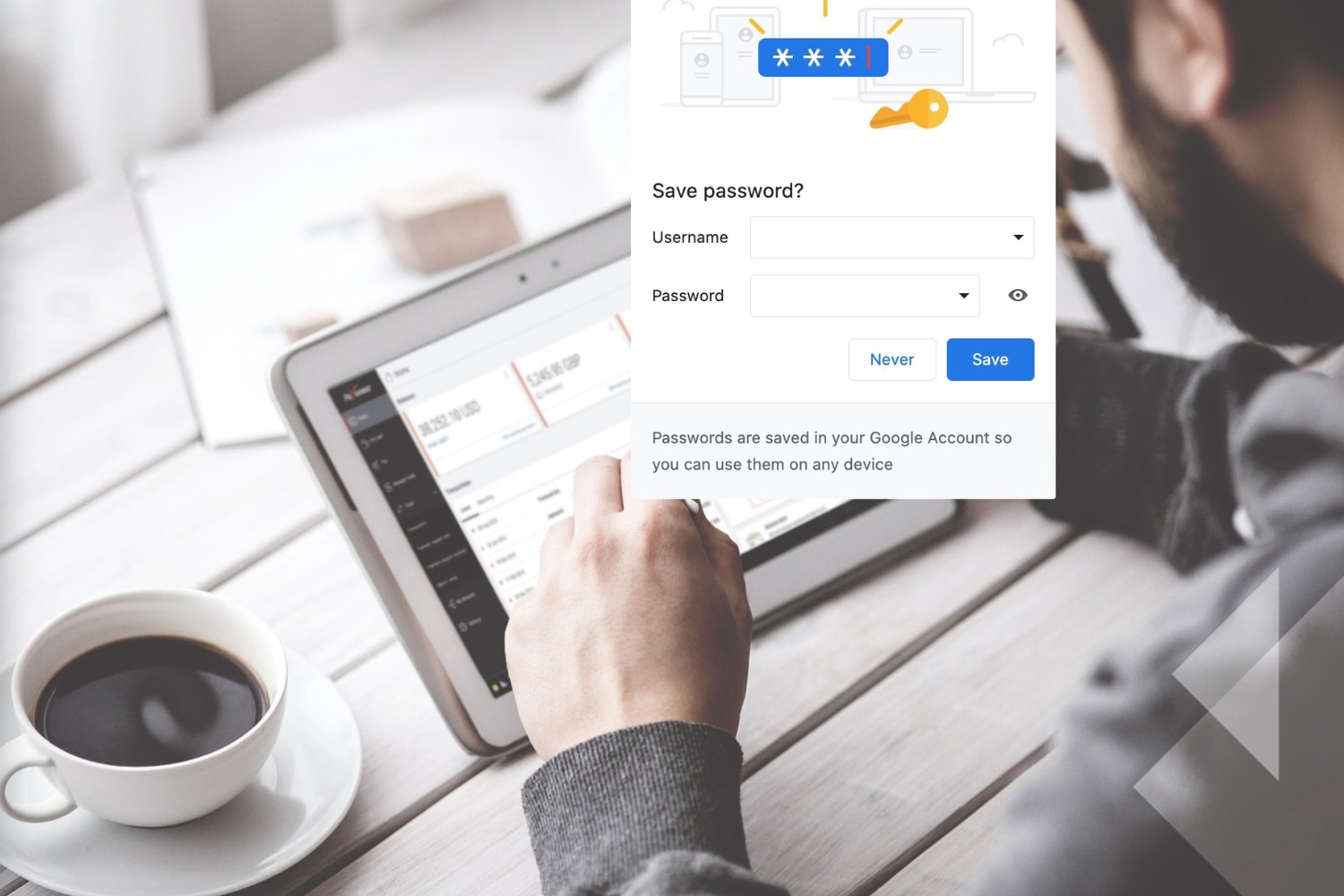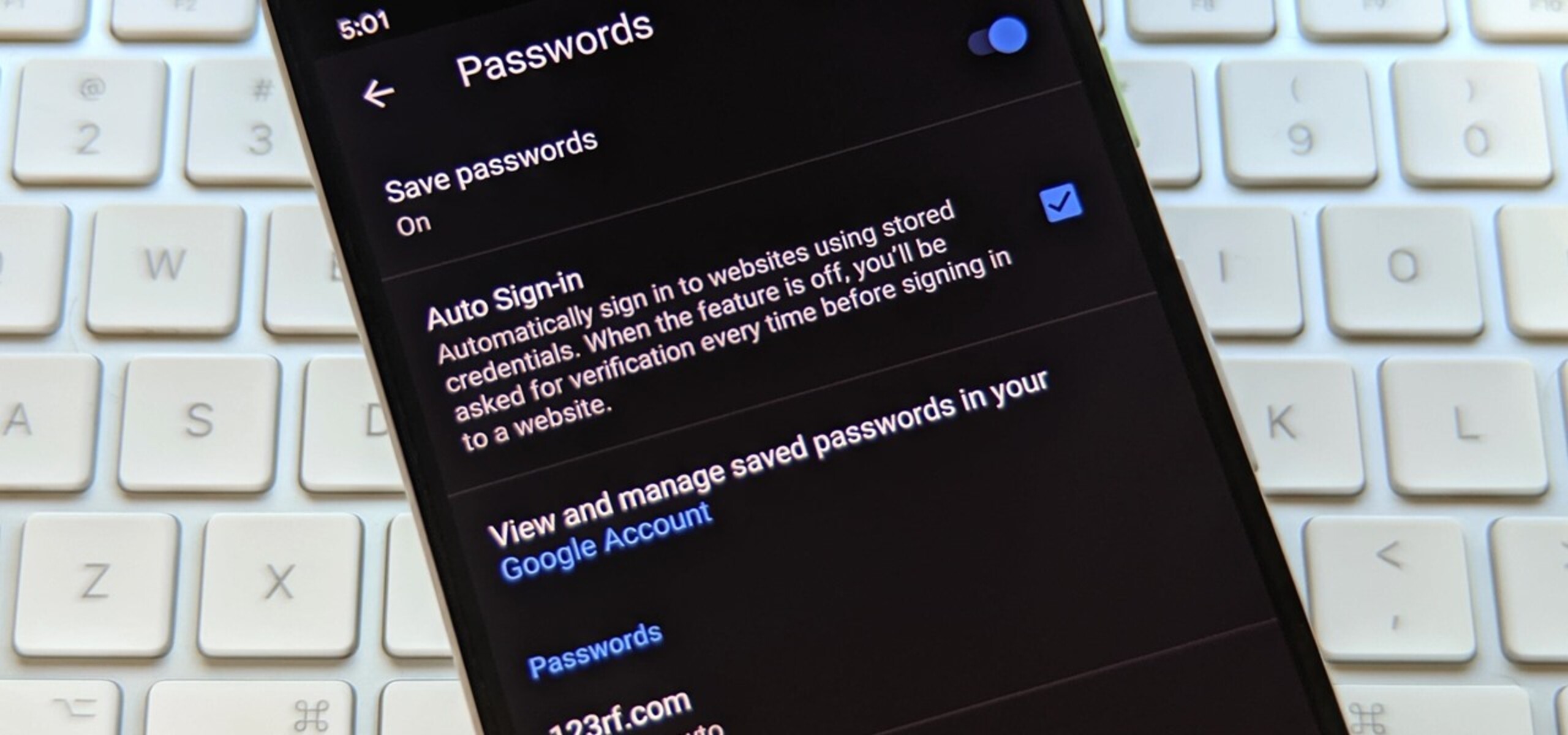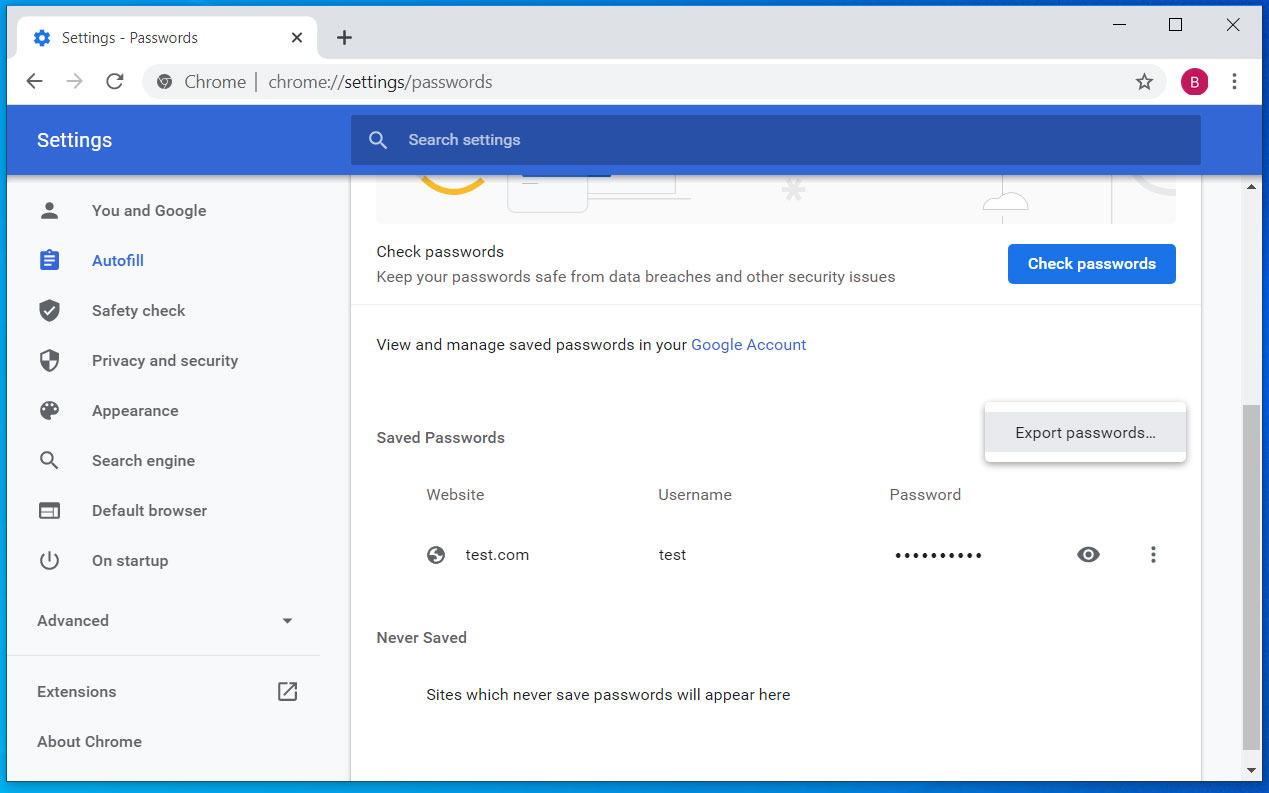Introduction
When it comes to browsing the web, convenience and security are two essential factors that users prioritize. With the multitude of online accounts we manage, remembering all the passwords can be quite a challenge. This is where the built-in password management feature of Google Chrome comes to the rescue. By allowing users to save and manage their passwords within the browser, Chrome simplifies the login process while ensuring the security of sensitive information.
In this article, we will delve into the process of saving a password on Chrome, providing you with a step-by-step guide to effortlessly store and access your login credentials. Whether you're a seasoned Chrome user or just getting started with this popular web browser, mastering the art of saving passwords can streamline your online experience and alleviate the burden of memorizing numerous login details.
So, if you've ever found yourself struggling to recall a password or constantly resetting forgotten credentials, fear not. By the end of this tutorial, you'll be equipped with the knowledge to securely save and manage your passwords on Chrome, empowering you to navigate the web with ease and confidence. Let's embark on this journey to unlock the potential of Chrome's password-saving capabilities and simplify your online interactions.
Step 1: Open Chrome and go to Settings
To begin the process of saving a password on Chrome, the first step is to open the Chrome browser on your desktop or laptop. Once the browser is launched, navigate to the top-right corner of the window and click on the three vertically aligned dots, which represent the "Customize and control Google Chrome" menu. This will unveil a dropdown menu with various options to explore.
From the dropdown menu, locate and select the "Settings" option. This action will redirect you to the Chrome Settings page, where you can customize and manage various aspects of the browser to suit your preferences and requirements.
Upon reaching the Settings page, you will encounter a plethora of configuration options, ranging from basic settings to advanced features. The user-friendly interface of the Settings page ensures that users can effortlessly navigate through the available options to tailor their browsing experience.
In the left-hand sidebar of the Settings page, you will find a list of categories, including "Privacy and security," "Autofill," "Advanced," and more. These categories serve as gateways to specific settings and functionalities within Chrome, allowing users to delve into the intricacies of the browser's capabilities.
By following these simple steps, you have successfully accessed the Settings page within Chrome, setting the stage for the subsequent actions required to save a new password. With the browser's settings at your fingertips, you are now poised to explore the "Passwords" section, where you can securely store and manage your login credentials for various websites and online services.
As we proceed to the next step, you will gain insights into the seamless process of saving a new password on Chrome, empowering you to streamline your online interactions and enhance the security of your digital identity. Let's embark on this journey to harness the full potential of Chrome's password-saving functionality and elevate your browsing experience.
Step 2: Click on "Passwords"
Upon reaching the Settings page in Chrome, the next pivotal step in the process of saving a password involves navigating to the "Passwords" section. This section serves as the gateway to managing and organizing your saved login credentials, offering a centralized hub for securely storing and accessing your passwords.
To access the "Passwords" section, you can simply scroll down the list of categories in the left-hand sidebar of the Settings page. As you peruse the available categories, you will encounter the "Autofill" section, which encompasses the autofill settings for addresses, payment methods, and passwords. Within the "Autofill" section, you will find the "Passwords" option, which is the focal point of our current endeavor.
Upon locating the "Passwords" option, click on it to delve into the realm of password management within Chrome. This action will direct you to the "Passwords" page, where you can view and manage the passwords saved in your Chrome browser. The page presents a comprehensive overview of your saved passwords, providing insights into the websites or services associated with each login credential.
As you immerse yourself in the "Passwords" page, you will notice the seamless organization of your saved passwords, allowing for quick and convenient access to the login details for your favorite websites and online platforms. Furthermore, Chrome offers the option to search for specific passwords, facilitating efficient retrieval of login credentials for targeted websites.
The "Passwords" section also incorporates additional functionalities, such as the ability to export or import passwords, enhancing the flexibility and convenience of managing your login credentials. This feature proves to be invaluable when transitioning to a new device or browser, as it enables the seamless transfer of passwords, ensuring continuity in your online interactions.
By clicking on "Passwords" within the Chrome Settings page, you have unlocked the gateway to a streamlined and secure approach to managing your passwords. The user-friendly interface of the "Passwords" section empowers you to take control of your login credentials, offering a cohesive platform to organize, access, and safeguard your passwords with ease.
As we progress to the subsequent steps, you will gain further insights into the process of saving a new password and managing your existing credentials within Chrome. By harnessing the capabilities of the "Passwords" section, you are poised to elevate your browsing experience and fortify the security of your digital identity. Let's continue our exploration of Chrome's password-saving functionality to unlock its full potential.
Step 3: Save a new password
With the groundwork laid in accessing the "Passwords" section within Chrome's Settings, you are now primed to embark on the pivotal step of saving a new password. This process is instrumental in streamlining your online interactions, as it enables you to securely store login credentials for various websites and online services, eliminating the need to repeatedly enter or remember complex passwords.
To initiate the saving of a new password, navigate to the "Passwords" section within the Chrome Settings page. Once you have accessed this section, you will be presented with a comprehensive overview of your saved passwords, along with additional functionalities to manage and organize your login credentials.
Within the "Passwords" section, you will find the option to "Save Password" or "Add Password" – a gateway to seamlessly store new login credentials. When you encounter a website or online service for which you wish to save a password, Chrome will prompt you to save the login details upon entering them for the first time. This intuitive feature simplifies the process of saving passwords, ensuring that you can effortlessly capture and store your login credentials with a few simple clicks.
Upon entering the login details for a website or online platform, Chrome will present a prompt at the top of the browser window, requesting permission to save the password. This prompt typically includes the option to "Save" or "Never" save passwords for the specific website. By clicking on "Save," you effectively store the login credentials within Chrome, enabling seamless access to the website or service in subsequent visits.
It is important to note that Chrome prioritizes the security of saved passwords, employing robust encryption measures to safeguard sensitive information. This ensures that your login credentials are stored securely within the browser, mitigating the risk of unauthorized access or compromise.
By seamlessly saving a new password within Chrome, you are not only simplifying the login process for your favorite websites and online platforms but also fortifying the security of your digital identity. This streamlined approach to password management empowers you to navigate the web with confidence, knowing that your login credentials are securely stored and easily accessible whenever the need arises.
As we progress to the subsequent steps, you will gain further insights into the management of saved passwords within Chrome, equipping you with the knowledge to efficiently organize and access your login credentials. Let's continue our exploration of Chrome's password-saving functionality to unlock its full potential and elevate your browsing experience.
Step 4: Manage saved passwords
Upon successfully saving your passwords within Chrome, the next crucial aspect involves managing and organizing your existing login credentials. The ability to efficiently manage saved passwords not only enhances the accessibility of your login details but also contributes to the overall security of your digital identity. Chrome offers a user-friendly interface for managing saved passwords, empowering users to seamlessly navigate and organize their login credentials with ease.
When you navigate to the "Passwords" section within the Chrome Settings page, you will be presented with a comprehensive overview of your saved passwords. This overview includes a list of websites or online services for which you have saved login credentials, along with the associated usernames. This organized display simplifies the process of identifying and accessing specific passwords, ensuring a streamlined approach to managing your login details.
Chrome provides the option to view and edit saved passwords, enabling users to update or modify their login credentials as needed. By clicking on a specific saved password entry, you can access the details associated with the website or service, including the username and the option to reveal the password. This functionality proves to be invaluable when you need to update your login details or make changes to your saved passwords.
In addition to viewing and editing saved passwords, Chrome offers the capability to remove or delete saved passwords from the browser. This feature is particularly useful when managing outdated or redundant login credentials, allowing you to declutter your saved passwords and maintain a concise and relevant collection of login details. By removing unnecessary or obsolete passwords, you can streamline the accessibility of your saved credentials, ensuring that you can effortlessly locate and utilize the relevant login details when needed.
Furthermore, Chrome incorporates advanced functionalities for managing saved passwords, including the option to export or import passwords. This feature facilitates the seamless transfer of passwords between devices or browsers, ensuring continuity in your password management across various platforms. Whether you are transitioning to a new device or exploring alternative browsers, the ability to export and import passwords empowers you to maintain a cohesive and consistent collection of saved credentials.
By efficiently managing your saved passwords within Chrome, you are not only optimizing the accessibility of your login details but also reinforcing the security of your digital identity. The intuitive interface and versatile functionalities offered by Chrome's password management capabilities empower users to take control of their login credentials, fostering a seamless and secure browsing experience.
As you navigate through the process of managing saved passwords within Chrome, you gain valuable insights into the intricacies of password management, equipping you with the knowledge to efficiently organize and access your login credentials. This comprehensive approach to managing saved passwords underscores the user-centric design of Chrome's password-saving functionality, elevating the browsing experience and fortifying the security of your digital identity.
Conclusion
In conclusion, the process of saving and managing passwords within Google Chrome embodies a seamless fusion of convenience and security, catering to the diverse needs of users navigating the digital landscape. By venturing into the realm of Chrome's password-saving functionality, individuals can unlock a myriad of benefits that streamline their online interactions while fortifying the protection of their sensitive login credentials.
The journey begins with the simple yet pivotal step of accessing the Chrome Settings page, where users are greeted with a plethora of customization options and advanced features. Navigating to the "Passwords" section within the Settings page serves as the gateway to a centralized hub for securely storing and managing login credentials. This intuitive interface empowers users to effortlessly save new passwords, providing a frictionless experience when capturing and organizing their login details for various websites and online services.
Furthermore, the ability to manage saved passwords within Chrome offers a comprehensive approach to organizing and accessing login credentials. The user-friendly interface facilitates the viewing, editing, and removal of saved passwords, ensuring that users can maintain a concise and relevant collection of login details. Additionally, the option to export or import passwords enhances the flexibility of password management, enabling seamless transitions between devices and browsers while preserving the continuity of saved credentials.
As users navigate through the intricacies of saving and managing passwords within Chrome, they are not only simplifying the login process for their favorite websites and online platforms but also fortifying the security of their digital identity. The robust encryption measures employed by Chrome ensure that saved passwords are safeguarded against unauthorized access, instilling confidence in users as they traverse the digital realm.
In essence, the journey of saving and managing passwords within Google Chrome transcends the realm of convenience, emerging as a testament to the browser's commitment to user-centric design and robust security measures. By harnessing the full potential of Chrome's password-saving functionality, individuals can navigate the web with ease and confidence, knowing that their login credentials are securely stored and readily accessible whenever the need arises.

























